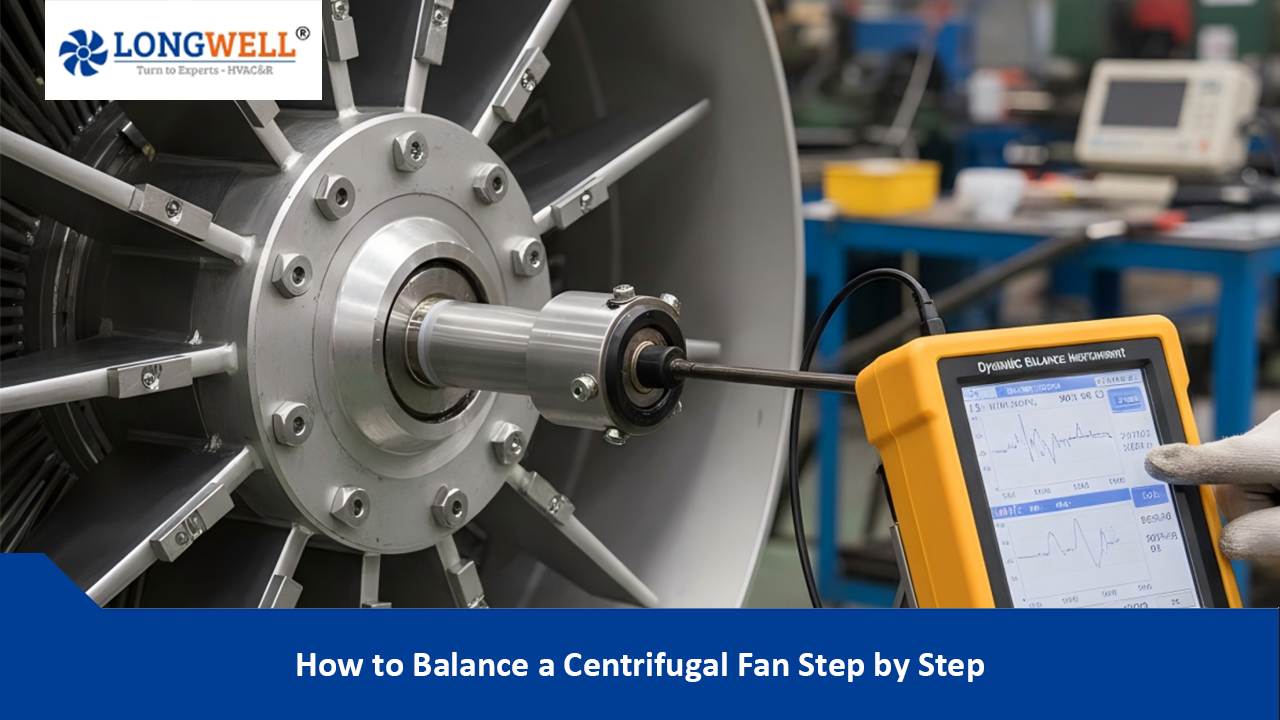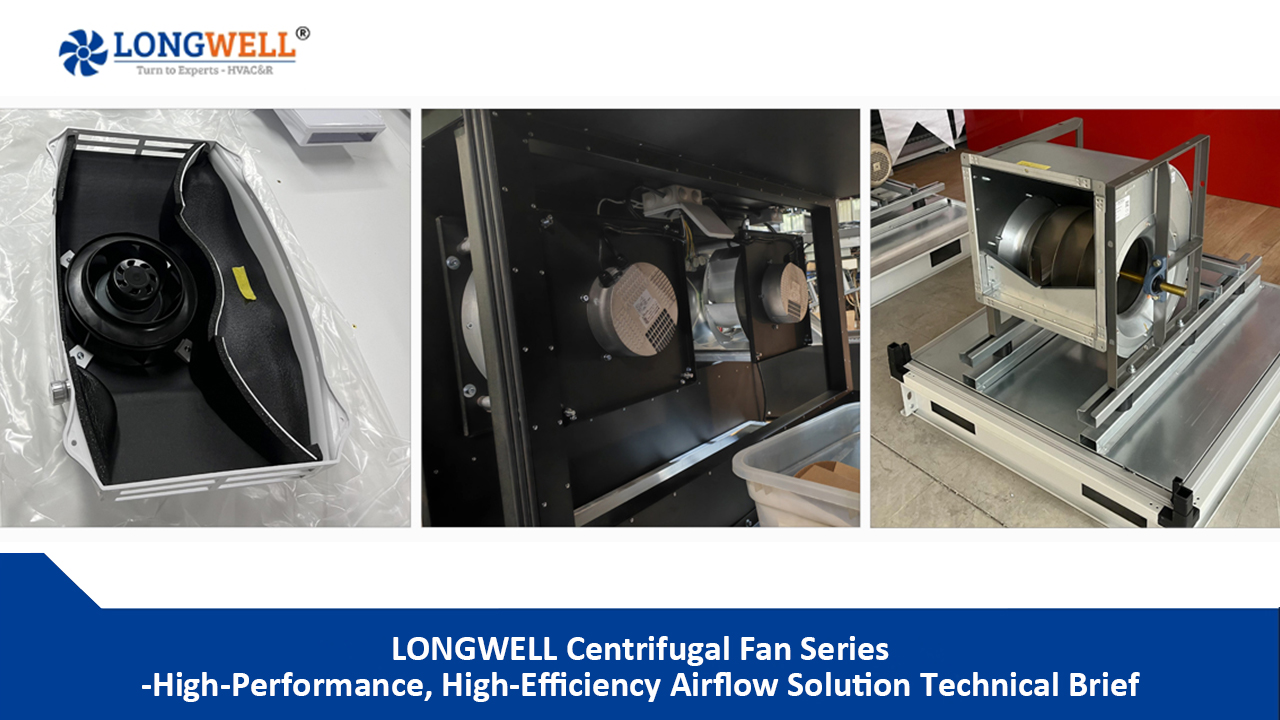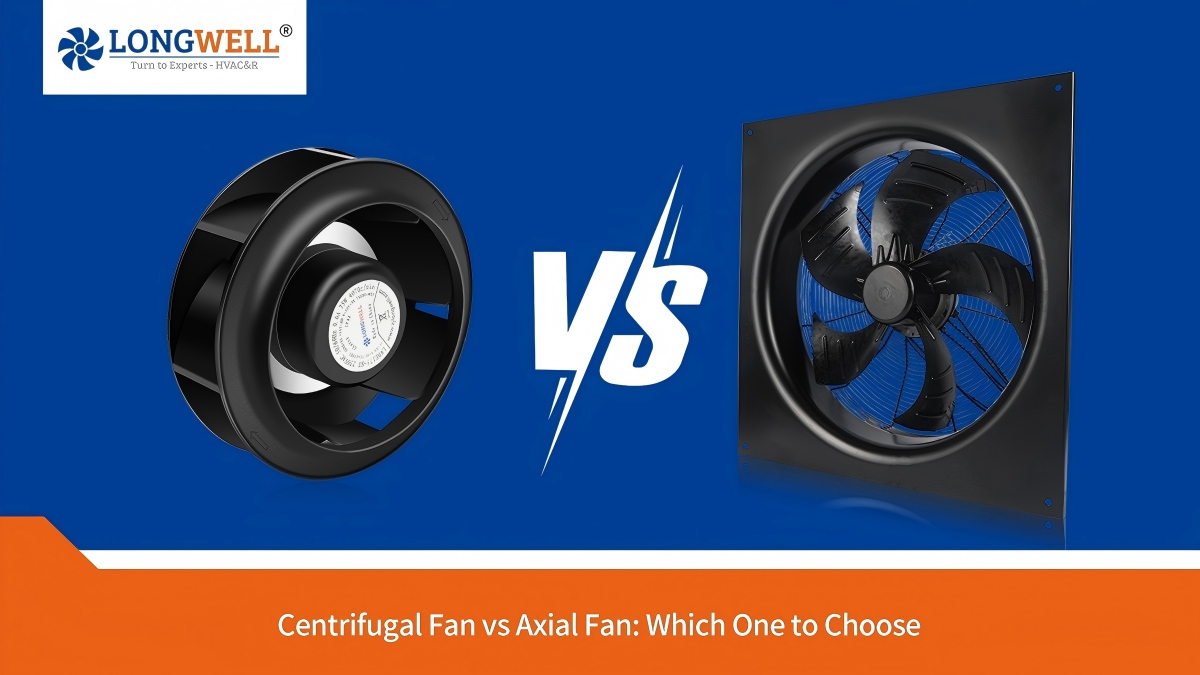In modern ventilation, HVAC, and air purification systems, fans are a critical component determining energy efficiency, noise levels, and overall stability. DC backward centrifugal fans have emerged as a top choice for an increasing number of projects due to their outstanding performance.
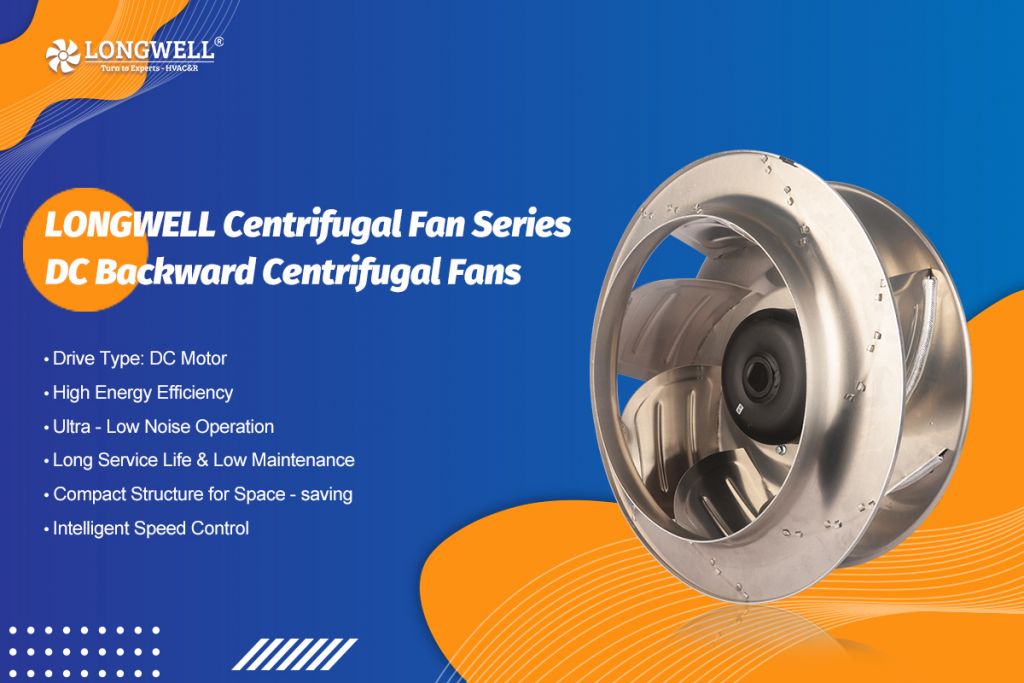
However, engineers and purchasers often have questions about the technical terminology and performance benefits surrounding this technology. As a specialized manufacturer in the fan industry, Ningbo Longwell Electric Technology Co., Ltd. (Longwell) aims to answer some of the most common core questions about DC backward centrifugal fans in this article.
Question 1: What is the relationship between “DC Fans” and “EC Fans”?
This is a very common point of confusion. Simply put, EC is the core technology that enables the highly efficient operation of a DC motor.
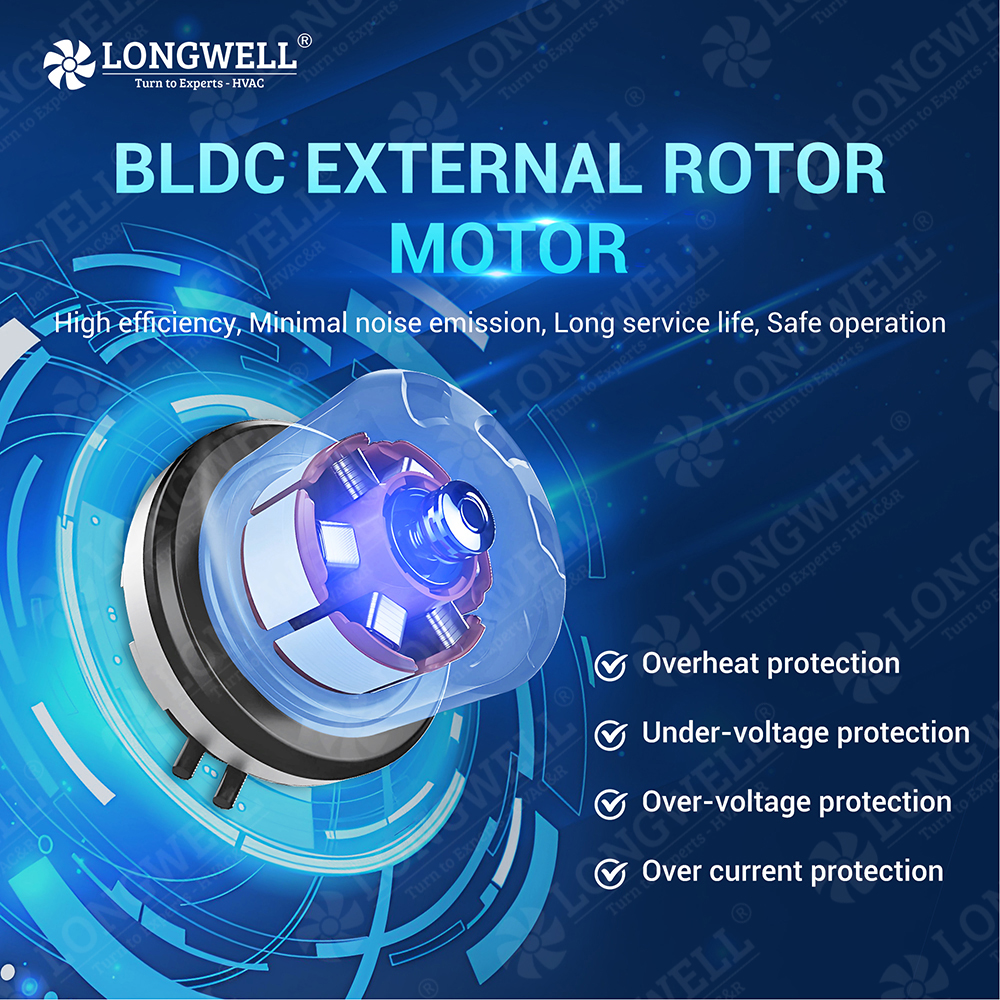
- DC (Direct Current) refers to a fan that uses a brushless DC motor. Compared to traditional AC (Alternating Current) motors, DC motors inherently offer higher energy conversion efficiency and superior speed control.
- EC (Electronically Commutated) is the electronic commutation technology. Think of it as the “smart brain” of the brushless DC motor. It has a built-in intelligent control module that converts AC input to DC and precisely controls the motor’s speed based on external commands.
Therefore, what we commonly refer to as an EC fan is essentially a fan with a DC brushless motor at its core. EC technology makes the DC fan intelligent, efficient, and highly controllable, transforming it from a simple on/off device into a component for a precision-engineered system.
Question 2: Why is the “Backward” impeller design preferred, and what are its technical advantages?
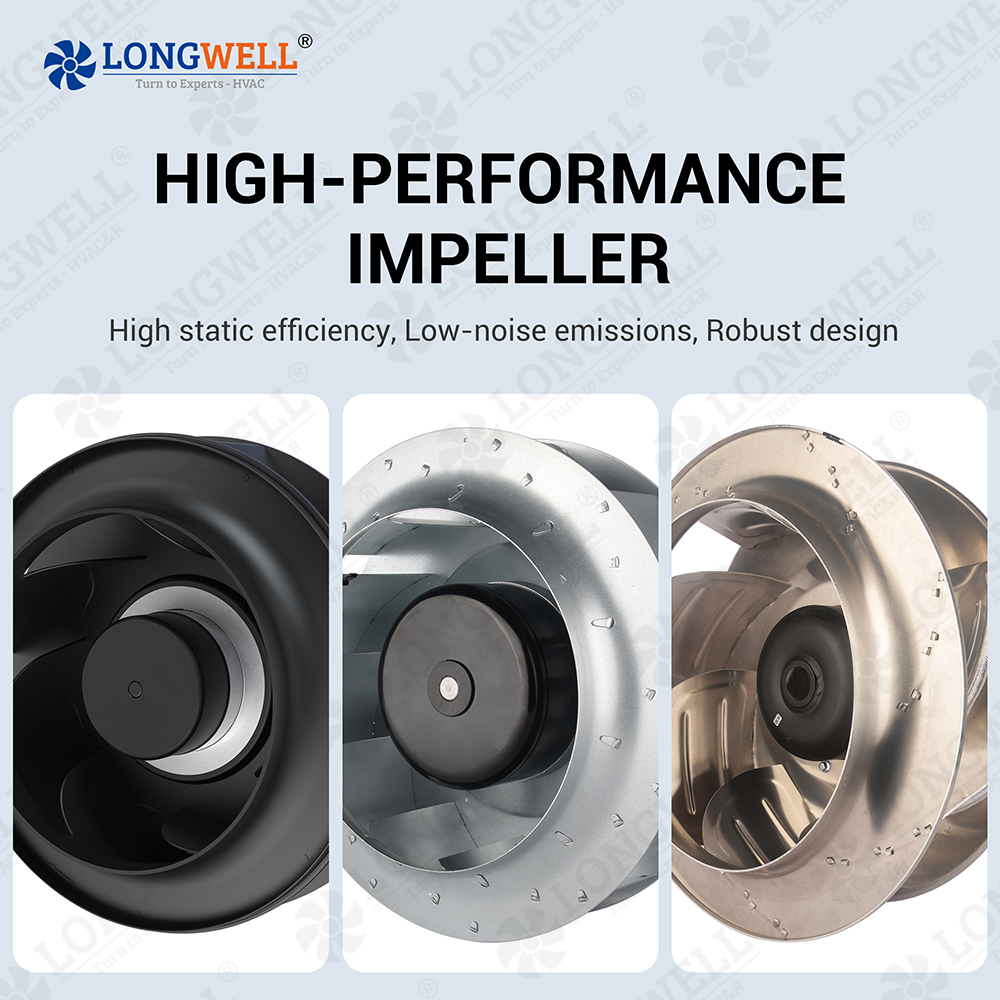
The geometric shape of the impeller directly impacts a fan’s aerodynamic performance. The blades of a backward centrifugal fan are tilted away from the direction of rotation. This design offers several key engineering advantages:
- High Efficiency and a Flat Power Curve: Backward-curved impellers are highly energy-efficient, using most of their power to generate air pressure and flow rather than wasting it as heat and noise. Their power curve is relatively flat, with “non-overloading” characteristics. This means that even if the system resistance (static pressure) changes, the fan’s power consumption will not increase dramatically, protecting the motor and maintaining system stability.
- Insensitivity to Static Pressure Changes: In real-world applications, duct resistance is not constant (e.g., a clogged filter increases resistance). A backward-curved fan can maintain a relatively stable airflow under such changes, ensuring the reliability of the system.
- More Compact Structure: Unlike forward-curved fans that require a scroll housing, many backward-curved fans can be used directly in open spaces, resulting in a more compact structure that is convenient for equipment integration.
Question 3: How does “High Energy Efficiency” translate into tangible operational benefits?
“High energy efficiency” is more than just a specification—it’s directly related to the operating costs and system performance over the entire product lifecycle.
- Significant Energy Savings: In applications that require long, continuous operation, such as data center cooling, air handling units (AHUs), and heat recovery systems (HRV/ERV), the energy-saving benefits of EC fans are particularly prominent. Especially during partial-load operation (the fan’s most common state), their efficiency far exceeds that of traditional AC fans, directly reducing electricity costs.
- Reduced System Heat Load: Higher efficiency means less energy is wasted as heat. The fan’s lower self-heating reduces the overall heat load on a system, which is crucial for temperature-sensitive environments like electronic equipment cooling.
- More Precise System Matching: Because EC fans offer stepless speed control, system designers no longer need to rely on fixed speeds. Instead, they can precisely adjust the fan speed to meet the exact airflow requirements, preventing the “overkill” energy waste common with fixed-speed fans.
Question 4: What is the practical value of 0-10V or PWM speed control?
This feature is the epitome of the EC fan’s intelligence. By using a standard 0-10V analog signal or PWM (Pulse Width Modulation) digital signal, the fan can connect seamlessly with various sensors or Building Automation Systems (BAS) to achieve “on-demand ventilation.”
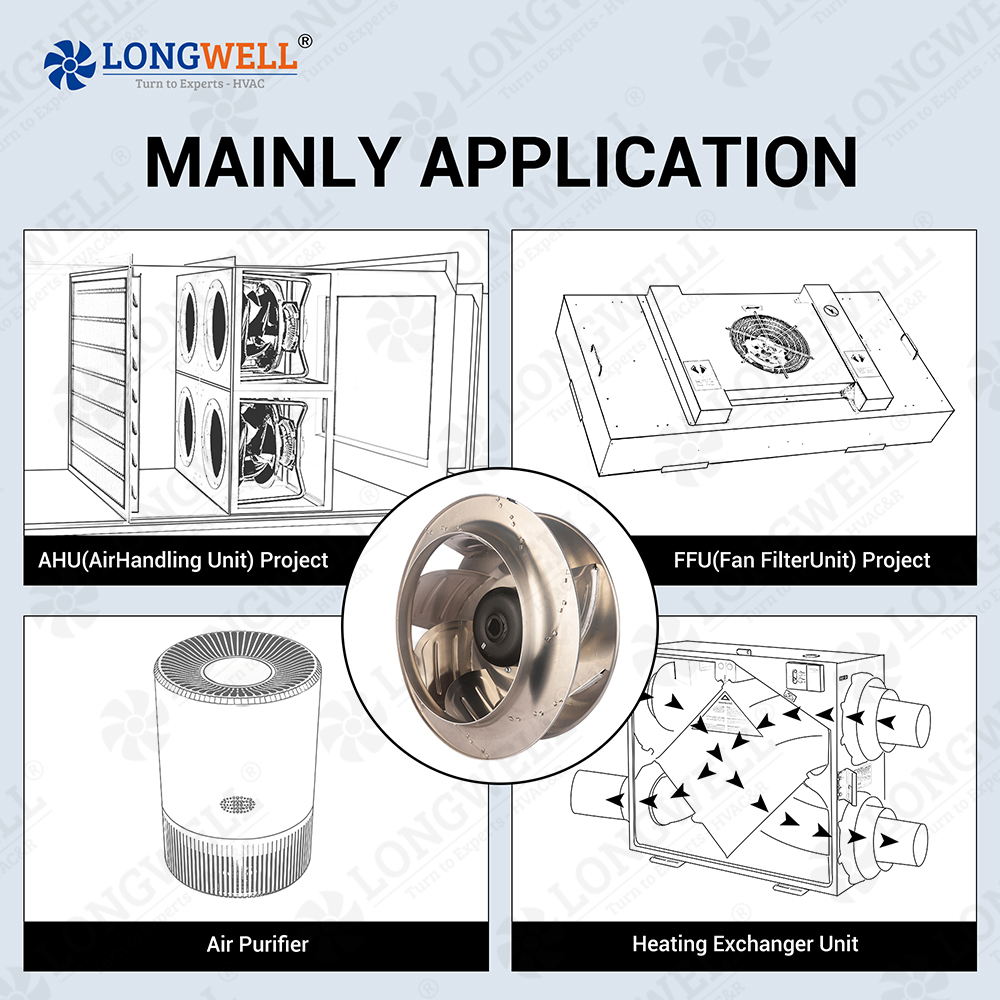
For example:
- In cleanrooms or laboratories, the fan speed can be adjusted based on a differential pressure sensor signal to precisely maintain positive or negative pressure.
- In commercial building ventilation systems, the fan can automatically increase or decrease fresh air volume based on CO2 sensors or occupancy sensors, ensuring air quality while avoiding energy waste when spaces are unoccupied.
- In heat recovery systems, the fan can intelligently adjust the ratio of exhaust and supply air based on indoor/outdoor temperature and humidity, balancing comfort with energy savings.
This level of intelligent control is simply unmatched by traditional multi-speed or fixed-speed AC fans.
Choosing a Fan Is Choosing Future Reliability and Economy
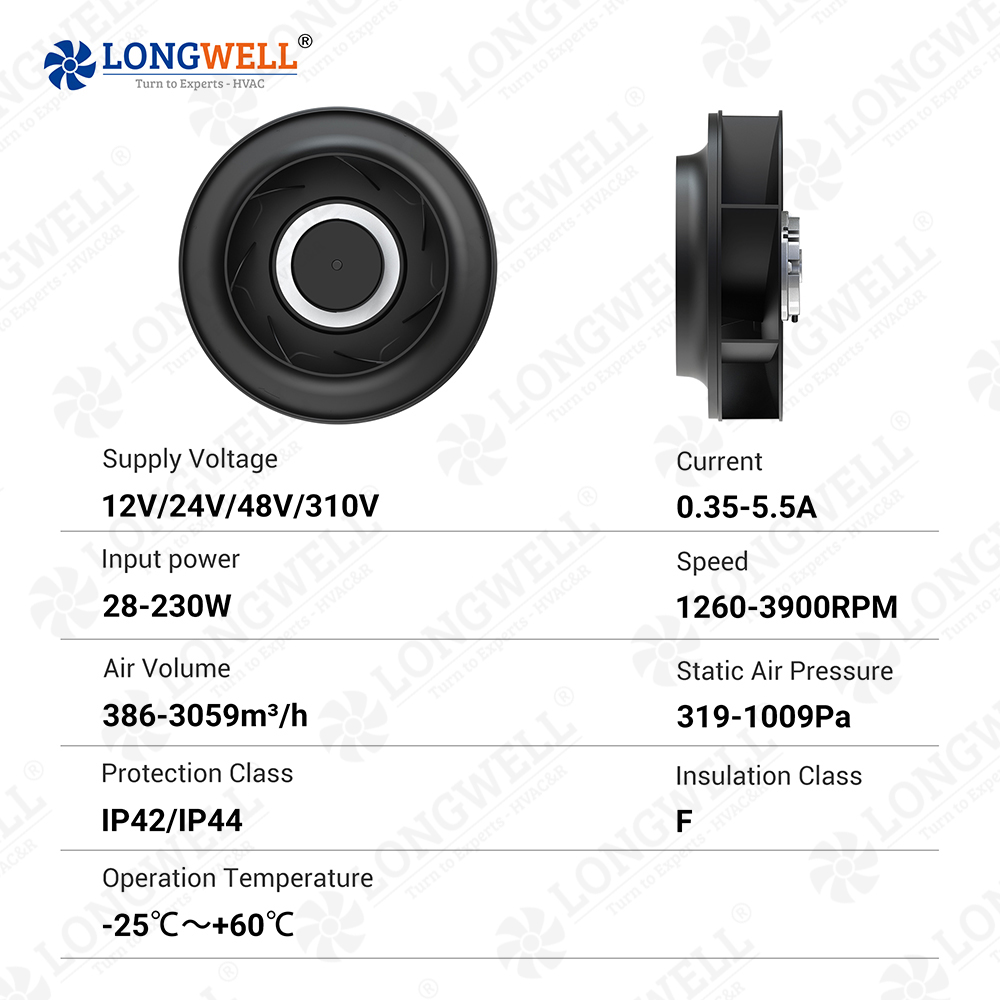
Selecting the right fan today is about more than just considering basic parameters like airflow and pressure. It’s about the entire system’s long-term operating cost, reliability, and level of intelligence.
The DC backward centrifugal fans from Ningbo Longwell (Longwell) are designed with a deep understanding of these core technical points and their practical applications. We are focused not just on the performance metrics at the time of manufacturing but on the lasting value our products create for customers in real-world scenarios.
If you are looking for a ventilation solution that combines high efficiency, low noise, and intelligent control for your project, we invite you to visit our official website at www.longwellfans.com or contact our technical team directly. We are ready to provide you with in-depth technical support and product selection assistance.
